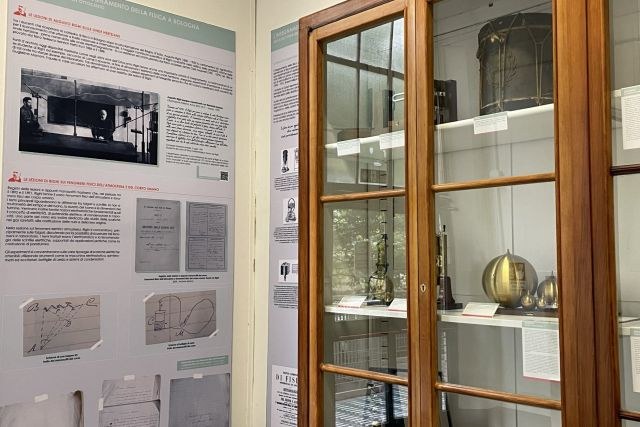A new permanent exhibition, enhancing the Physics Collection of the University of Bologna, was inaugurated at the Department of Physics and Astronomy "Augusto Righi" of the University of Bologna (Via Irnerio, 46 – Bologna): The Royal Museum of Physics and Teaching in the 19th Century, dedicated to Augusto Righi. While a first permanent exhibition in 2020 focused on Righi and electromagnetic waves, the new section will highlight Righi and his teaching activities at the University of Bologna.
Curated by the University Museum System (SMA) and the Department of Physics and Astronomy "Augusto Righi" (DIFA), the exhibition is located on the ground floor of the historic building, in front of the Aula Magna. I'ts an ideal reconstruction of the Royal Museum of Physics inaugurated on 12 April, 1907, by Augusto Righi alongside the founding of the Institute.
This museum housed scientific instruments used by Righi and his predecessors to teach physics during their lectures. Today, these instruments are displayed in their original cases and organized according to the criteria used at the time: instruments for experiments related to optics, electricity and magnetism, thermodynamics, mechanics, acoustics, and geodesy. The craftsmanship of 19th-century instrument makers—whose signatures are still visible on the exhibited items—gives the exhibition a strong aesthetic impact, blending science and art as effectively now as it did then.
The Royal Museum of Physics did not emerge from nothing. It integrated and expanded the old Physics Cabinet of the Institute of Sciences, established in 1711, which throughout the 18th century supported the teaching activities of predecessors such as Jacopo Bartolomeo Beccari, Laura Bassi, and Giovanni Aldini. These renowned professors of the University of Bologna are given ample space on the exhibition panels, with prints of their autographs, registers, and lecture notes taken by students. This was made possible through the collaboration of significant university archives—such as the Historical Archive of the University, the Archive of the Academy of Sciences, and the DIFA Archive—and local archives, such as the State Archive.
Additionally, captions and QR codes will allow visitors to further explore the functioning of the displayed apparatus through videos and detailed information sheets.
The new permanent exhibition will be open for free starting June 21, from Monday to Friday, during the opening hours of the Department of Physics and Astronomy “Augusto Righi”, via Irnerio 46, Bologna.


